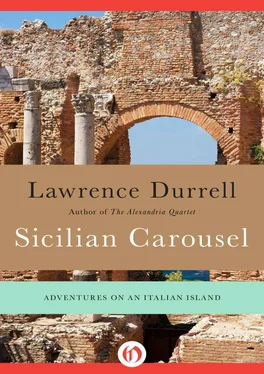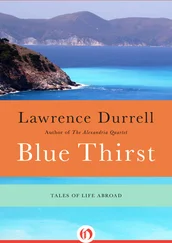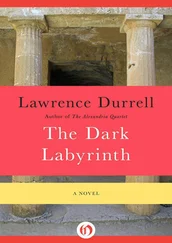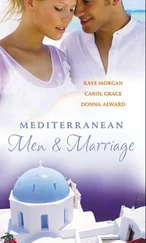Lawrence Durrell - Sicilian Carousel - Adventures on an Italian Island
Здесь есть возможность читать онлайн «Lawrence Durrell - Sicilian Carousel - Adventures on an Italian Island» весь текст электронной книги совершенно бесплатно (целиком полную версию без сокращений). В некоторых случаях можно слушать аудио, скачать через торрент в формате fb2 и присутствует краткое содержание. Год выпуска: 2012, Издательство: Open Road Media, Жанр: Путешествия и география, на английском языке. Описание произведения, (предисловие) а так же отзывы посетителей доступны на портале библиотеки ЛибКат.
- Название:Sicilian Carousel: Adventures on an Italian Island
- Автор:
- Издательство:Open Road Media
- Жанр:
- Год:2012
- ISBN:нет данных
- Рейтинг книги:4 / 5. Голосов: 1
-
Избранное:Добавить в избранное
- Отзывы:
-
Ваша оценка:
- 80
- 1
- 2
- 3
- 4
- 5
Sicilian Carousel: Adventures on an Italian Island: краткое содержание, описание и аннотация
Предлагаем к чтению аннотацию, описание, краткое содержание или предисловие (зависит от того, что написал сам автор книги «Sicilian Carousel: Adventures on an Italian Island»). Если вы не нашли необходимую информацию о книге — напишите в комментариях, мы постараемся отыскать её.
Sicilian Carousel: Adventures on an Italian Island — читать онлайн бесплатно полную книгу (весь текст) целиком
Ниже представлен текст книги, разбитый по страницам. Система сохранения места последней прочитанной страницы, позволяет с удобством читать онлайн бесплатно книгу «Sicilian Carousel: Adventures on an Italian Island», без необходимости каждый раз заново искать на чём Вы остановились. Поставьте закладку, и сможете в любой момент перейти на страницу, на которой закончили чтение.
Интервал:
Закладка:
I did not think this a suitable line of talk to embark upon with my companion, for he was full of funny little inferiorities, and tended to panic in the face of an abstract idea. No, I held my peace as we returned to recover our coach in which Mario and Roberto were playing cards.
We had made good time apparently and our next port of call was to be the network of Christian catacombs which honeycombed a whole sector of the town not far distant from these broad and smiling slopes. It was so well grouped — the cluster of monuments — that there was time for one swift parting glimpse of the theater which was now cooling rapidly in the westering light. In ancient times the whole auditorium, which could seat up to fifteen thousand people, opened upon the slopes leading to the harbor of Plymerion — a wonderful backcloth as in almost every ancient Greek theater in Greece as well. It is always a little pang, and indeed a sense of puzzlement, to realize that there was always a backcloth to the stage, shutting in the action, condensing and concentrating it, I suppose. One wishes one could read a little more accurately into the monuments and their ancient functions. Who produced, who stage mounted these strange hieratic pieces of theater? It could not have been a committee. Perhaps a small group of select priests? There is something we have not yet grasped, and it has to do with a different notion of the sacred and the profane from our own.
Deeds went to some trouble to explain the intricacies of the Athenian war and the resounding defeat of Athens by the Syracusans; it was a homely way to do history, describing how Alcibiades, that “disreputable feller got a bowler hat and was sent back under arrest, only to escape to Sparta.” This exposition only elicited a grave and sympathetic clicking of the tongue from Beddoes, who added under his breath something about not being able to trust a queer. But all these speculations were pushed awry by the Bishop who suddenly announced that there never had been any prisoners in the Latomia del Paradiso — they had all been herded into another and more sinister cutting not far from Santa Lucia — the church of which, with its famous Caravaggio, we had been hoping to catch a glimpse. Here indeed some asperity had developed as it was not on our official itinerary and the lapse seemed inexcusable. Was it not a renowned set piece for the curious tourist? Roberto was plaintive at first — the tour had not been arranged by him personally. But after more argument in which almost everyone seemed to have something to say, he agreed to foreshorten the catacombs and try to cram in a brief visit to the Saint before we were expected back at the hotel for dinner. This little argument occupied us while Mario grimly circled the town and finally drew rein before the catacombs. There was an unhealthy-looking monk on duty at the picture postcard stall. He looked as if he had just been disinterred himself. The catacombs were not unimposing, but to tell the truth it took a good deal of imagination to re-people them with the stiffening dead in their winding sheets — a coal mine would have offered the same spectacle, really.
Moreover, if we had found the gloom and shade of the Latomie disagreeable how could we be disposed to relish the even more absolute gloom of these long sinister catacombs with their marker points of light and their dank pesty atmosphere. Nor was the wretched church where St. Paul is supposed to have preached of any great aesthetic interest. This is the whole trouble with guides and guidebooks — the difficulty of disentangling what is historically important from what is artistically essential. So far the annotations of Deeds seemed the best way of dealing with the problem; though it must be admitted that the great Baedeker did his best in this field of appreciation with astonishingly good insight and great care. But ages change, and taste which is so unstable an element changes with them. There is no certainty to be found in judgment. We were glad when at last we assembled at the little postcard kiosk with its hangdog monk, where the French ladies once more slaked their unquenchable thirst for picture postcards.
And so downwards, seawards, to keep our tryst with Santa Lucia, the patron saint of the town who was done to death among these peaceable streets and squares in 304. The church is supposed to mark the site but … there was a surprise in store for us. It explained why the tourist itinerary had left out this object of veneration; everything was all closed up for repairs. The two ancient and queer crucifixes which one has seen on film and read about so often had both been carted off for cleaning; worst of all, so had the Caravaggio. We hung about in the neighborhood of San Sepulcro (also closed) and felt rather sheepish about having complained so bitterly to Roberto about the shortcomings of the trip. Nor did he himself crow — he was too nice for that; he looked as chagrined as the rest of us by this unexpected vexation. There was nothing to be done. But at least he had kept his word and tried to show us the great painting.
Dinner was some way off as yet so we took a brief stroll among the network of pleasant streets leading down to the waterfront and it was on our return to regain the little red bus that a new diversion was presented to us by the female Microscope who was taken suddenly ill. She had been eating sweets or cough drops all day, and also drinking iced almond milk. Suddenly she turned an anguished, pewter-colored visage towards us and took a few lurching steps forward to fall flat on her face at our feet, shuddering slightly as if with an attack of epilepsy. Roberto showed great consternation, and Mario positively bounded from his perch in the bus to help lift her. She was trying to be sick it appeared but without result. Everyone fussed. Her pulse was faint and her gunmetal color was far from reassuring. Roberto decreed that we must get back to the hotel with all dispatch and ask a doctor to come at once and examine her. Her husband who showed little alarm put his arm round her and said: “It is nothing. It will soon pass. It is just a little aéro-phagie to which she has often been subject.” This is an extraordinary French disease which is quite common in the Midi and is based on the notion that there are some people so singularly constituted that they involuntarily keep on swallowing air until it gets to such a point that they either go off with a bang or develop a tremendously painful series of symptoms like colic and gastritis. I have known a number of cases of this scourge; and here was another virulent example of air swallowing which had turned this harmless lady into a gulping, pewter-colored wreck with heaving stomach and rolling eyes. She really did look awful and I wondered what sort of remedy might be proposed by an Italian medical man — perhaps to give her a potion of castor oil and then stand back with his fingers in his ears? But it was all very well to joke — poor Roberto was in a fearful state and with reason. He was more or less in charge of us and naturally dreaded anything going wrong which might hamper the smooth working of the tour. We had, after all, embarked so lightly on the Sicilian Carousel, giving hardly a thought to doctors or undertakers or insurance lawyers. And here we were with this cautionary attack of air tightness.
The lady was now moaning slightly and rocking and had folded her hands across her middle in a childish (and curiously reassuring) gesture like a small girl who had eaten too many green apples. But Mario got us back to the hotel in record time and here everyone showed anxiety and concern for the patient as we helped her out of the bus and up the steps into the hotel. The infant was there, all eyes, but playing no part. It was one huge gape — if a microscope can be said to be a gape. Our faces would have made an interesting study in concern — selfish concern, for we did not know whether this attack of illness might not prejudice the tour. Also, as almost nobody in the group liked the Microscopes there was a good deal of hypocrisy mixed into our concern and perhaps clearly decipherable in our expressions. There was general movement to get the lady up to her room where she could be undressed, but perhaps this is what she feared for she refused to move off the sofa in the lounge and elected to treat with the doctor there, upright and in full public view. It was not satisfactory from a medical point of view but as she was French and extremely obstinate there was little to be done about it. Here she waited then, gulping and closing her lidless eyes like a sick lizard, and here we hovered around the outskirts with well-meaning solicitude, waiting for the doc who would certainly be called El Dottore and would flourish one of those continental-type thermometers which are large and impressive and have to be operated in an embarrassing posture.
Читать дальшеИнтервал:
Закладка:
Похожие книги на «Sicilian Carousel: Adventures on an Italian Island»
Представляем Вашему вниманию похожие книги на «Sicilian Carousel: Adventures on an Italian Island» списком для выбора. Мы отобрали схожую по названию и смыслу литературу в надежде предоставить читателям больше вариантов отыскать новые, интересные, ещё непрочитанные произведения.
Обсуждение, отзывы о книге «Sicilian Carousel: Adventures on an Italian Island» и просто собственные мнения читателей. Оставьте ваши комментарии, напишите, что Вы думаете о произведении, его смысле или главных героях. Укажите что конкретно понравилось, а что нет, и почему Вы так считаете.











